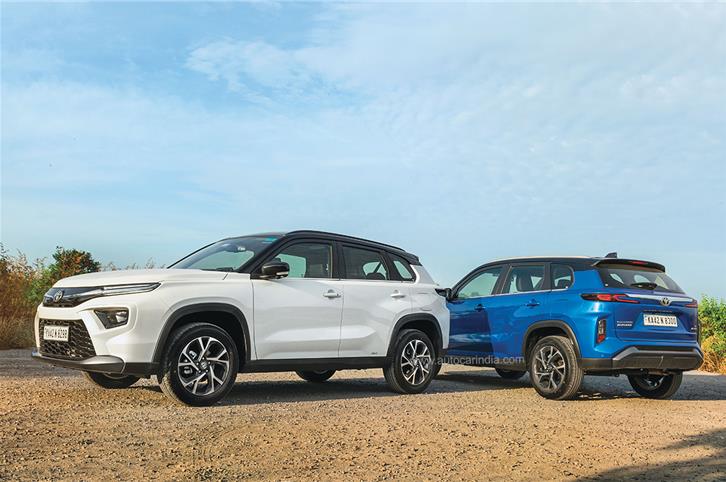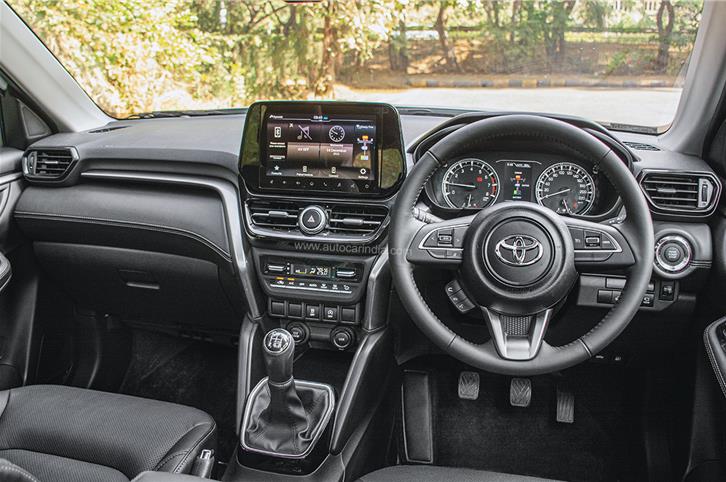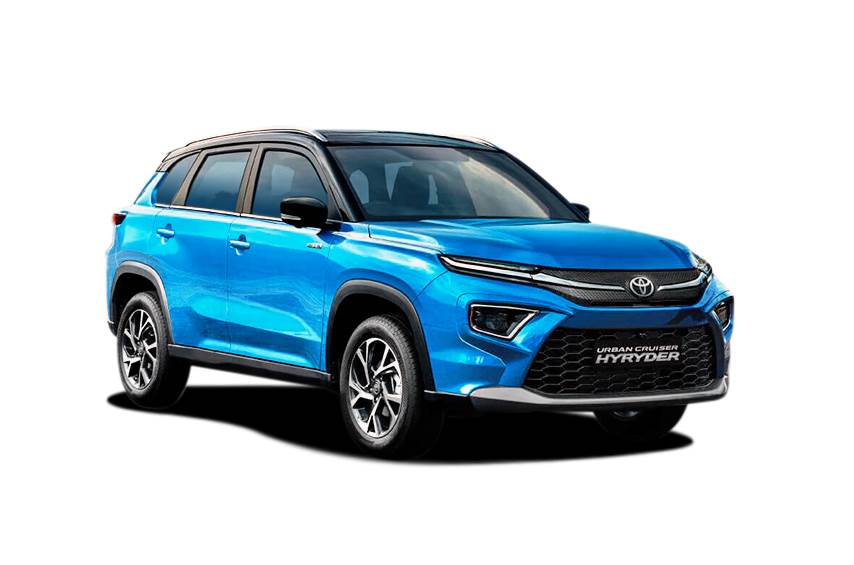Toyota Urban Cruiser Hyryder review, road test
We put Toyota’s newest SUV through our full-blown tests to see if it has what it takes to make it in the midsize market.
Published on Feb 12, 2023 09:00:00 AM
86,822 Views
Follow us on

Interior is stylish, but rivals offer better fit-finish.

Mild-hybrid’s 355-litre boot is large, well-shaped; Hybrid’s is 100-litre smaller.
The Hyryder is the longest car in its class, measuring 4,365mm, whereas its width and height are comparable to a Hyundai Creta and Kia Seltos. Designers have adopted a snazzy and futuristic approach to give the Hyryder an identity that imbibes some traditional Toyota family design traits, while appearing different from the Maruti Grand Vitara. It sports a flat, raised bonnet for that ever-important SUV appearance and attractive twin LED DRLs (which double-up as turn indicators).
It also gets a tasteful chrome treatment, an enclosed grille panel, and an oversized hexagonal air dam underlined by a grey chin. Interestingly, the mild-hybrid version’s grille panel and even the headlamp housings are black, whereas the hybrid features a carbon-fibre-like design on the panel and chrome around the headlamps.
 LED headlamps light up the road nicely. DRLs double up as indicators.
LED headlamps light up the road nicely. DRLs double up as indicators.
There’s little that distinguishes the Hyryder from its Maruti cousin from the side. In profile, it just has one prominent waistline, which extends from the headlamp to the tail-lamps. Squared out wheel arches house stylish 17-inch alloys and rather meaty rubber. However, there’s an ungainly gap due to the vehicle’s raised ride height, which liberates a class-best 210mm ground clearance.
In sync with its front styling, it features a split tail-lamp set-up with twin C-shaped LED elements in the brake lamps – the reversing light and indicators are placed lower down, in a separate vertical housing. The rear bumper gets a gray faux skid plate on the plastic cladding. And, as is the case at the front, the hybrid gets a chrome boot applique, while the mild-hybrid gets a silver and black panel.

The Maruti Suzuki Grand Vitara and Toyota Urban Cruiser Hyryder are based on Suzuki’s Global C platform, which also underpins the Brezza (new and old). Weighing 1,155-1,295 kg, it is a touch lighter than the Hyundai Creta petrol, which tips the scales at 1,180-1,323kg, but what’s reassuring is that the Brezza secured a solid 4-stars in GNCAP crash tests, a while ago.
The Hyryder and Grand Vitara are built at Toyota’s Bidadi plant (in Karnataka), however, it has been a bumpy road for Toyota, a brand otherwise known for its immaculate ‘Just-In-Time’ production. A few months after its launch, production had taken a beating for over 30 days to resolve a seat belt anomaly, which left buyers waiting endlessly for delivery, and further inflating waiting periods to six months for some variants. Toyota has also issued a few recalls relating to seat belts and one for a plausible defective airbag controller.
Copyright (c) Autocar India. All rights reserved.




Comments
Member Login
Personal Details
No comments yet. Be the first to comment.